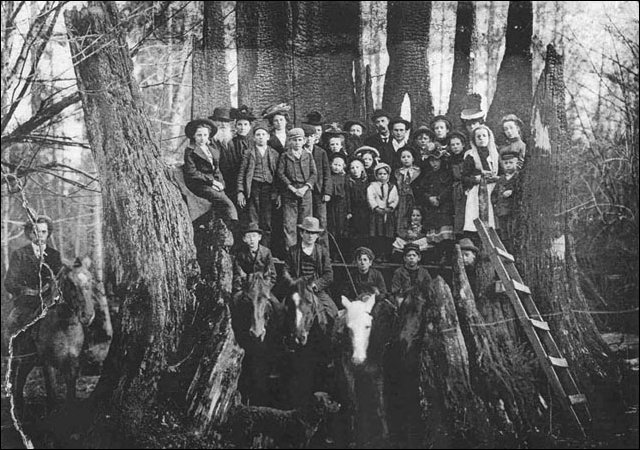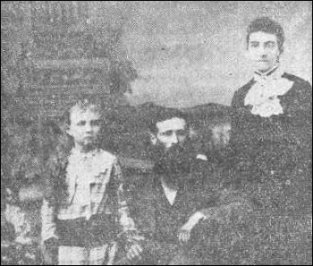This cedar stump on the Van Fleet homestead was a meeting place for pioneers from the 1880s until the 1950s and this photograph of it in 1902 is one of the famous by Darius Kinsey, the photographer who would establish his fame while living in Sedro-Woolley from 1896-1906. It was broad enough that several horses and the entire Sunday School class could fit inside. The men and boys on horses were (l. to r., Mitchell Wicker, Jay Smith, Clyde Mattice, George Hammer, Harry Clark. Back row: Agnes Devin, ___ Van Fleet, Ernest Starr, rev. Carter, Mark Gillette, Ethel Van Fleet, Leona Starr, Frances Devin. Front: Earl Van Fleet, Art Douglass, Bill Hegg, Nellie Brown, Mae Hegg, Mildred Mattice, Nellie Angell, Mildred Hegg, Lois Wilmarth, Muriel Wilmarth, Beulah Carter, Dot Mattice, Emma Hayes. A Carter boy is behind the snag. Click on the photo for a larger version. I asked the late Stan Nelson, who owned the neighboring ranch in Skiyou, if he remembered the stump. He recalled that sometime in the 1940s it was dynamited to make way for pasture.
|

 810 Central Ave.,
810 Central Ave., 

